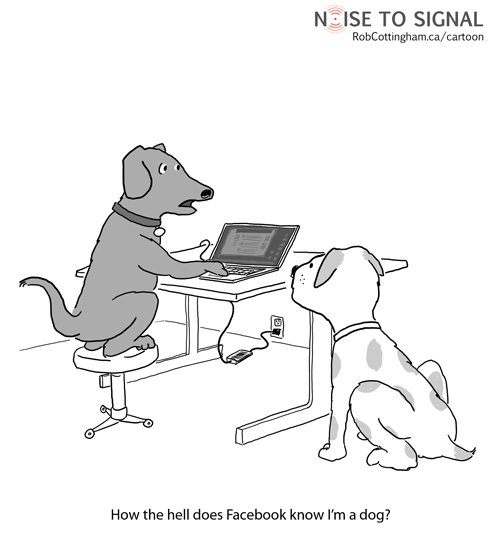Parenting in the Cyber Age: A Parents’ Guide to Safer Social Networking
Category:Cyberstalking,Facebook,Infosec Communicator,Internet Safety,Privacy,Risk,Social Networking,Uncategorized
Are you as a parent worried about what your kids may encounter online? Are you unsure of how they or you can stay safe online when using social networking sites? Although our kids are now college grads, we had the same concerns about the dangers our kids faced online as most of you do.
In my professional life, I’m a technical communicator at a large private technology university. I am responsible for making staff and students aware of information security issues—a role which has probably made me even more paranoid about the dangers out there on the Internet!
I’ve also had the opportunity to take part in a few K-12 Cyber Security Awareness initiative that gave me an opportunity to talk to teachers and parents about online issues and listen to their questions and concerns. I’ll address some of these concerns in this post. I am also interested in what you would like to know about security issues, so please comment on this post.
Oh…one other thing…my goal is to make this topic understandable for the average layperson. You do not need to be a technology expert to learn how to stay safe online and to keep your kids safe!
Social Networking Concerns
In the last several years, teens and young adults have flocked to social networking sites or blogging sites, such as MySpace and Facebook. This has given them opportunities to meet and communicate with people of similar interests, share information, gather numerous “friends,” share pictures and videos, and even discuss important issues. (Most of these social networking sites are inappropriate for preteens. Although most social networking sites require members to be at least 13, enforcement is next to impossible.)
Risks and Preventive Measures
Sharing Private information—It is extremely easy for unscrupulous people to gain access to you and your children’s private information. When your kids use social networking sites, read the site’s privacy policy. It tells you what information the owners of the web site collect, and how they intend to use it. Make sure that you and your kids understand how that information may be shared.
Profiles—Encourage your kids to guard their information. Keep private information private. Ask them to restrict access to their profiles, when possible, to “friends only.”
You may find that it’s hard for teenagers to take this seriously and understand the risks. Help them choose screen names carefully. Help them choose a reasonably “complex” password—at least 8 characters using a combination of upper and lower case letters, numbers, and symbols (when allowed).
Blogs—Encourage your kids to not share personal information, including their ages, schools, addresses, phone numbers, and parent and sibling names. Make sure they’re not posting information about their social plans. (Don’t give someone who is cyber stalking them information about where they’ll be at a given time.)
Moderating Comments—Ask your kids to approve comments by their friends before they allow them to be posted. Their friends may be less than careful with both their own and your kids’ information.
Inappropriate language and pictures—College admissions offices and potential employers search online to see what kind of information prospective students and employees post online, especially in social networking sites. If they see what appear to be “character issues” portrayed, your teens may not be accepted for their college or job of choice.
Making themselves a target—People can pose as anybody online. That 15-year-old friend might be a 45-year-old male looking for “company.” Sexual predators use social networking sites to identify and engage potential victims. Identity thieves look for private information to use to gain access to victim’s bank accounts or credit.
It’s forever—There is another big problem most of us do not think about. Information we post online NEVER really goes away. Even when you delete a blog entry or a picture, it is “cached” somewhere on the Internet. There are sites on the Internet that specialize in archiving other Web sites.
What you can do
- Talk to your kids.
- Ask them to help you set up your own profile and page on the same sites they use.
- Subscribe to their blogs and read what they are posting.
- Respond to their posts.
- Look at the pictures they have chosen to share.
- Find out who their friends are and see what kind of information they share.
- If you have a family computer, try to put it in an open area where you can see your kids’ online activities.
- If your family has multiple computers sharing an internet connection through a router, you may want to consider restricting the times their computers can connect to the Internet. Restricting access to reasonable hours helps ensure that they (or you) are not spending all night online.
My philosophy as a parent has been to teach my children how to interact with the world while maintaining their spiritual values. Despite your best efforts, your children are going to encounter these dangers at some time. In my experience, you cannot prevent them from doing something they are intent on doing.
Let’s make sure they know how to protect themselves now, before they’re in an environment where we aren’t there to supervise or teach these lessons.
Related articles
- If a stranger asked you in-person the same questions Facebook does, what would you say? (zdnet.com)
- Social Networking Sites: A Parent’s Guide(onguardonline.gov)
- Social Networking Sites: Safety Tips for Tweens and Teens (onguardonline.gov)
- Rules ‘N Tools™ for Social Networking Sites: A Guide for Parents, Guardians and Educators (protectkids.com)
- Always Use Protection: A Teen’s Guide to Safe Computing (alwaysuseprotection.com)
- Safe(r) Use of Social Media: Facebook, Blogging, and Online Privacy (benwoelk.wordpress.com)


 It’s been a little less than two weeks since the
It’s been a little less than two weeks since the 













